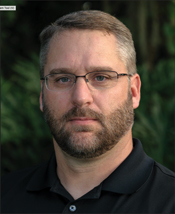The Future Is Now
By Chris Topazi and David Ririe
Deployment Considerations for Distributed Access Architectures
As competitive pressures and bandwidth consumption continue to increase, the industry has looked toward new technical solutions to enable the future and provide a superior customer experience. One emerging technology is distributed access. This migration to new architectures is an inflection point, crossing intra-organizational boundaries and touching virtually every aspect of the network. This is a generational change, not just an adaptation of existing technology, and this change is coming more rapidly than ever before. Consider the speed at which these specifications were drafted, products were developed, and now, the speed at which this transition is taking place, and one gets a sense of the complexity. So, how do operators approach this opportunity?
As the industry prepares for large-scale deployments of distributed access architectures, there are many aspects to consider for a successful deployment of such a complex and groundbreaking solution. We at Cox Communications have been working through a number of these, and there are certainly some areas that we will uncover as we begin trials in the very near future. This short article lists some considerations that we feel are noteworthy as operators are preparing to deploy this technology.

Technology
- Selecting remote PHY or remote MAC-PHY
- Choosing virtual or physical CCAP cores or some combination thereof
- Architecture selection using converged or standalone video cores
- Designing network/aggregation architectures, including modeling of connectivity and scaling
- Selecting an optical transport architecture and/or multiplexing techniques
- Creating a timing server architecture for R-DTI/PTP
- Establishing vendor selection criteria (RFI, RFP, lab testing) for the above
- Identifying legacy services that will and will not be supported, and creating a lab environment encompassing all supported services
- Defining a roadmap to minimize regrettable spending on aging technologies (prepare for full duplex, FPGA vs. ASIC-based devices, for example)
Process

- Establishing a plan based on a “crawl, walk, run” principle, with senior leadership buy-in. Begin with lab trials, office trials, field trials, and slowly ramp deployment, with clear entry and exit criteria and adequate time for feedback into the processes at the exit of each step
- Identifying and minimizing impact to customer experience, for both business and residential customers — considering customer notifications, reducing outage time and construction impact, etc.
- Maximizing re-use of existing business processes where possible
- Clearly defining migration steps from traditional HFC to DAA technologies, including the atypical deployments that may force unique process steps
- Drafting playbooks for all services and network elements (DOCSIS, video, CCAP, CIN, headend, outside plant) to ensure that the design is standardized throughout the enterprise. (For a discussion on standardization, see this interesting article from the previous issue of Broadband Library, written by my colleagues, Michael Garramone and David Ririe. https://broadbandlibrary.com/a-standardization-success-story/)
People 
- Developing a core team that understands the entire system and can communicate to individual groups
- Creating sub-teams to work on focused, specific issues — tools, rack layouts, physical plant changes, service grouping, etc.
- Identifying dependencies across organizational boundaries and putting plans and people in place to track these dependencies
- Crisply defining responsibilities for various parts of the organization to prevent items falling into the gaps
- Training in new technology for many groups, including using the same terminology to enhance effective communication
Tools 
- Identifying new data needed for troubleshooting, such as physical and logical network topology, and finding places to store it
- Selecting key metrics for monitoring tools, in the short, medium and long term, and developing means for collecting those metrics
- Defining and developing automation tools that will be an absolute requirement to grow to the scale required to rebuild our networks
- Engaging tools development teams early and allowing access to test systems to further enhance their understanding of the technology
- Leveraging of vendor tools where appropriate, especially early on in deployments, keeping in mind the complexities this introduces in multi-vendor environments
These topics are, of course, just scratching the surface. As trials continue and more is learned, it is important that, as an industry, we share best practices as we build the future for our customers today.
We will follow up this primer with some lessons learned and fact checking as we move to deployments in the second half of this year!

Chris Topazi
Senior Cable Access Engineer
Cox Communications, Inc.
chris.topazi@cox.com
Chris Topazi is a Senior Cable Access Engineer at Cox Communications, where he is responsible for testing and development of deployment guidelines for DOCSIS 3.1 technology. He has worked in the cable telecommunications industry for 18 years, including the past four years at Cox. Prior to joining the Cox Communications team, Chris designed and developed products for both headend and outside plant applications at Scientific Atlanta and Cisco.
 David Ririe
David Ririe
Sr. Director, Access Engineering
Cox Communications, Inc.
david.ririe@cox.com
David Ririe serves as a Senior Director in the Access Engineering group for Cox Communications in Atlanta, GA. He has worked in various engineering roles for Cox Communications starting as a Network Engineer in the Omaha, NE market 14 years ago. He has lead the team through a number of transitions and upgrades on both the DOCSIS and PON technology platforms in that time. He began his telecom career in the U.S. Air Force working on various communications and data networking platforms in the air and on the ground.
Credit: vkilikov / Shutterstock.com



